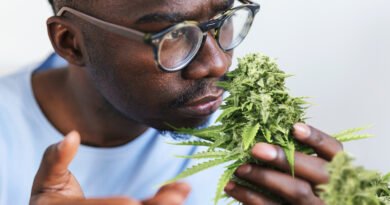How to Safely Remove Poison Ivy from Your Garden
With spring fast upon us, many garden-minded folks are itching to get that garden going if they haven’t already. For us non-perfectionists, that usually includes quickly raking up last year’s rubble coupled with some “I should have done this earlier” weeding.
And therein lies the danger. Because within those weeds, often hidden and always lurking, lie those three-leafed sons of itches known as poison ivy; its botanical name is Toxicodendren radicans. Interestingly, for radicans, spellcheck suggested radicals or Canadians.
For some, the mere mention of poison ivy is enough to make their skin crawl… or at least begin to itch a little. For others, it is the elephant in the garden. Ignore it, work around it, and try not to touch it. Understandable, but wishful thinking as it can get you in many ways. Poison ivy must be eradicated entirely. It is the only way to ensure you won’t come into even inadvertent contact with any part of the plant and its itch-inducing oil.
In addition to producing a skin-irritating secretion that causes maddening itching, redness, and blistering of the skin, there is also a lingering curse. Whatever surface this slick oil contacts, it remains there for an ungodly length of time. And while the moisture in the oil may dissipate, its residue can remain active for up to five years! Seriously, this stuff has the shelf-life of a Big Mac.
The Poison in Poison Ivy
So, what makes poison ivy so itchy? The answer lies in its toxic resin. This poisonous mix of organic compounds, known as urushiol, is expressly designed to be a severe skin irritant and effective deterrent to would be diners… and gardeners. Most affected are humans.
Some mammals, such as deer, are seemingly resistant to its toxins and eat the leaves. Unfortunately, this nasty unguent is not only in its leaves, but is ubiquitous throughout plant. Therefore, any contact with the leaves, vine, or stems, can result in a case of poison ivy.
Dogs can suffer from its effects as well, especially on their bellies. Cats, not so much as they are covered in hair everywhere. That said, if either runs through a patch of poison ivy and you pet it… guess what?
No Rash Decisions: Removing Poison Ivy
When the time comes that you decide to eradicate your poison ivy, you’re going to need to dress properly. Usually, when confronted with a task we roll up our sleeves and get to it. But with poison ivy, you need to roll down those sleeves before ever getting near this plant. Wearing gloves is paramount to avoiding contact with the skin and long sleeves are a must. Protective eyewear is also recommended and even a hat or scarf on the head isn’t beyond the pale when confronting this enemy.
(Read also: Get to Know Your Garden’s Weeds)
To kill the plant naturally, trace the vine to its beginning in the earth and uproot it. You’ll probably have to dig it up with a shovel or hoe. Remember, every part of this plant is poisonous.
Any tools used during this process should be thoroughly cleaned with alcohol. A solution of bleach and water in a spray bottle will work, but bleach is just so dangerous to surrounding plants and is bad for the environment, too. Wash your clothes/gloves immediately afterward.
One Mow Thing (Don’t!)
Mowing over or weed-eating poison ivy is not a good thing to do. In truth, it’s a bad thing. Mowing it is like running the leaves through a fan and having all that urushiol become airborne. It is still active while airborne. In fact, the toxicant resin in poison ivy is nearly indestructible.
And while many readers may have experience burning weed… this is one you’ll be better off not lighting up. Fire and poison ivy is a bad combination. The smoke from burning leaves and vines still carries all the itchy ingredients of the fresh plant and remains viable, so you definitely don’t want to breathe in that smoke or be anywhere near where it is being burned.

All things being equal, you have about 30 minutes before the oil penetrates the skin after contact. If you catch it early and wash it off correctly you can pretty much avoid an outbreak. I’ll share with you the correct and most efficacious way I’ve found to remove the oil and thwart its spread.
After contact it’s usually eight to 24 hours before a skin rash appears. There are certain factors that come into play once you do make contact that may determine the severity of the itch and accompanying rash. Factors like how much oil got on you and where. Areas where the skin is thinner are affected easier than thicker-skinned areas. Places like the face and inside the underwear area are extremely sensitive and susceptible to poison ivy oil.
(Read also: Weeds in My Greenhouse? Say It Ain’t So!)
So, what is the best way to deal with poison ivy once you’ve got it on you? A pertinent question, but first, let’s cover what you should not do, which is what most people do first.
Scratch That Idea
✗ Don’t knowingly scratch the infected skin. Once on your fingers, wherever and whatever you touch will retain traces of urushiol that can cause an outbreak.
✗ Don’t wash with hot or even warm water. Remember, this is oil. When warmed it thins out, causing it to spread more easily.
✗ As oil, it does not rinse off easily and so a quick rinse with a hose does little to remove it. It probably even helps spread it, especially if you use a hand to wipe the infected area while rinsing.
✗ Don’t use soap. I know, it sounds crazy but according to one expert, soap acts as a pathway to distribution. The oil clings to the suds. Other sources say to use soap. It’s your call.
While there are others, the following is a rather effective method of removing the urushiol from the skin which is the secret to relief. This simple technique was perfected by a PhD who studied poison ivy for 20 years. I tried, but he didn’t want to be formally interviewed.
The Cure
We use this method and it works great.



Itch a Miracle!
I can state truthfully that my wife recently got poison ivy on her face and both eyelids. This was hours after she had unknowingly contacted it and after the redness and swelling had begun. She followed the aforementioned method then applied some dandelion balm we’d made to the cleaned area, but any good lotion will do. The results were miraculous. The swelling stopped, the reddening subsided, and there was no more itching.
So, there you have it. What to do and what not to when combating that radical Canadian, poison ivy.




